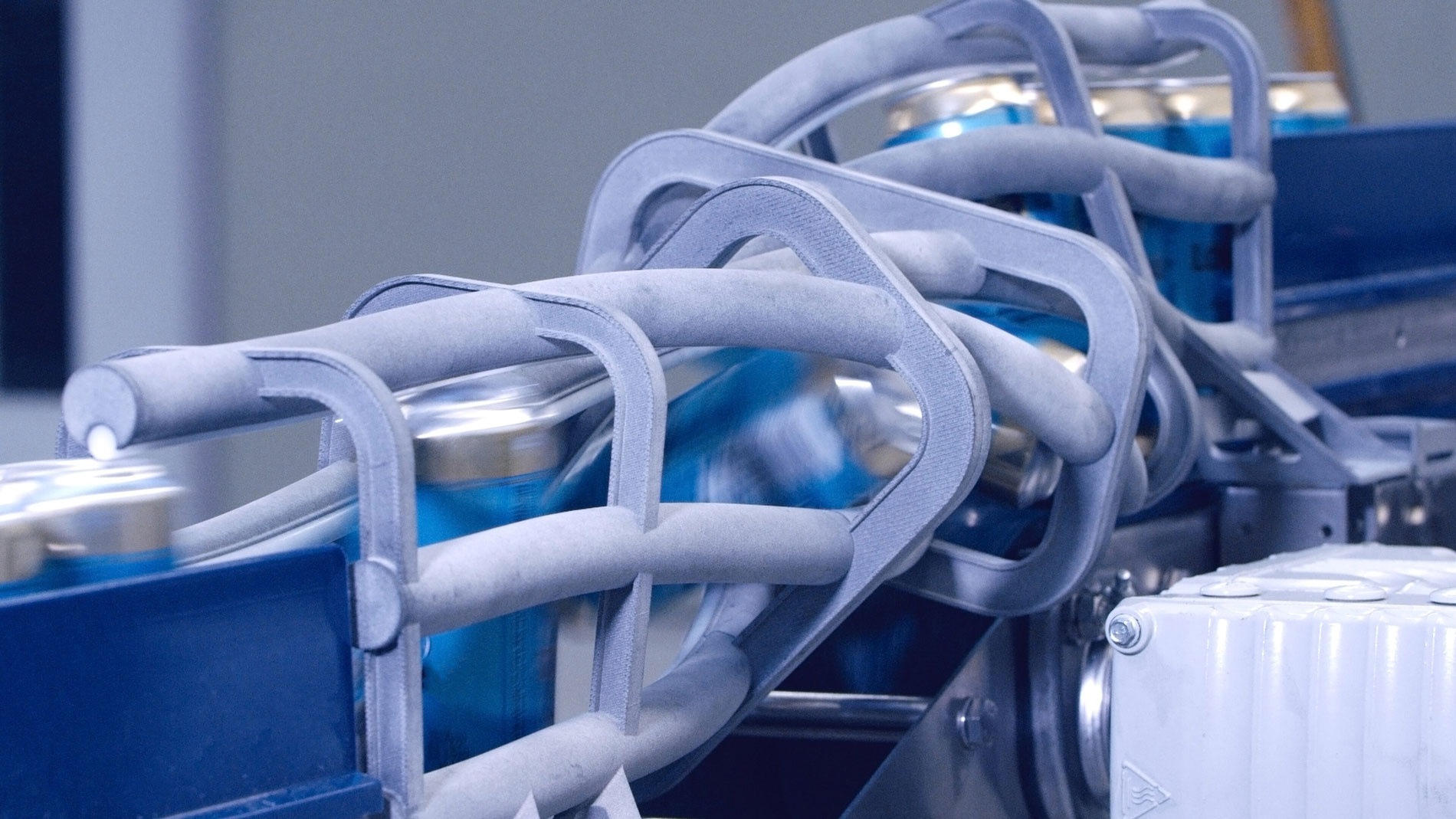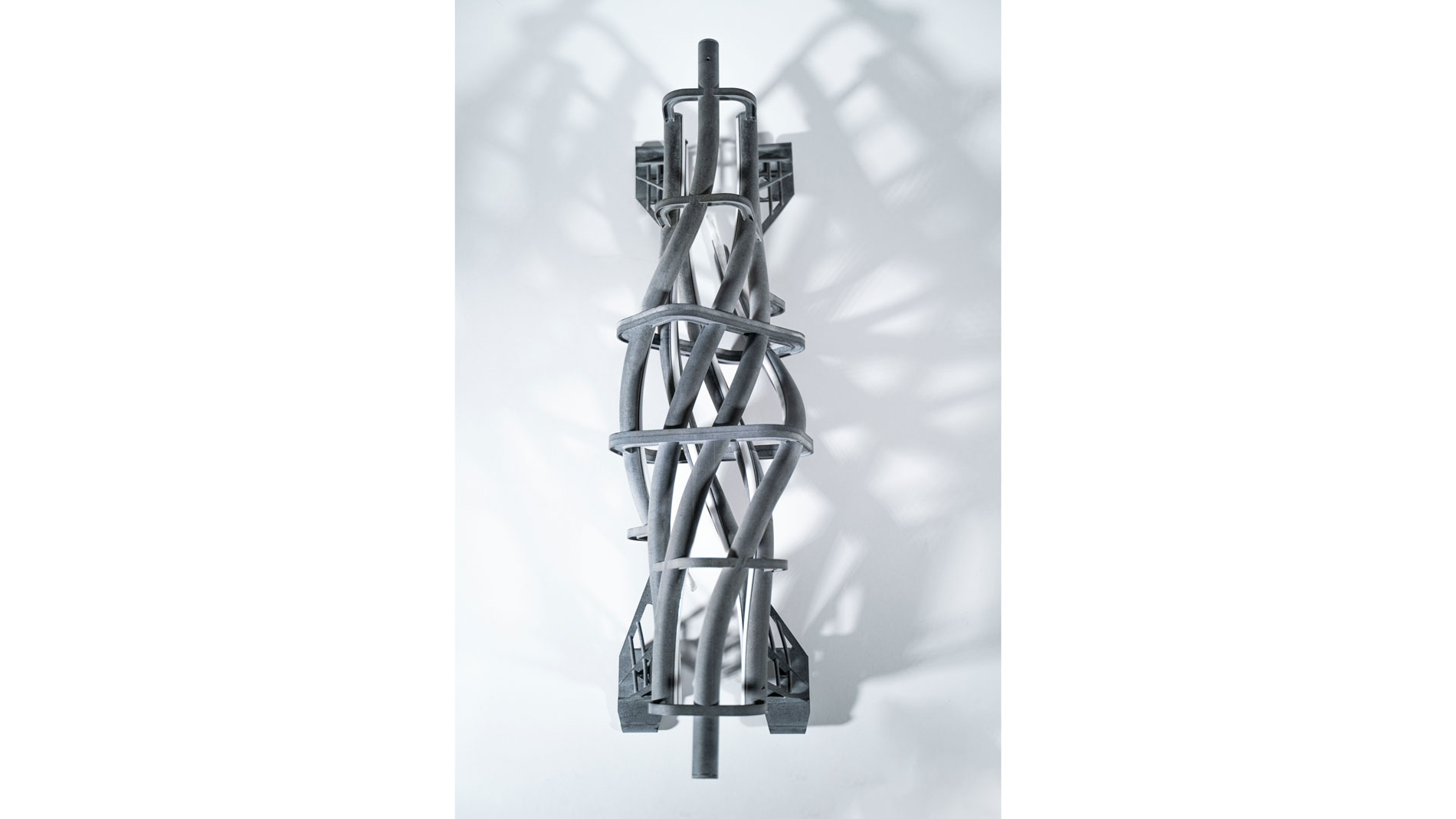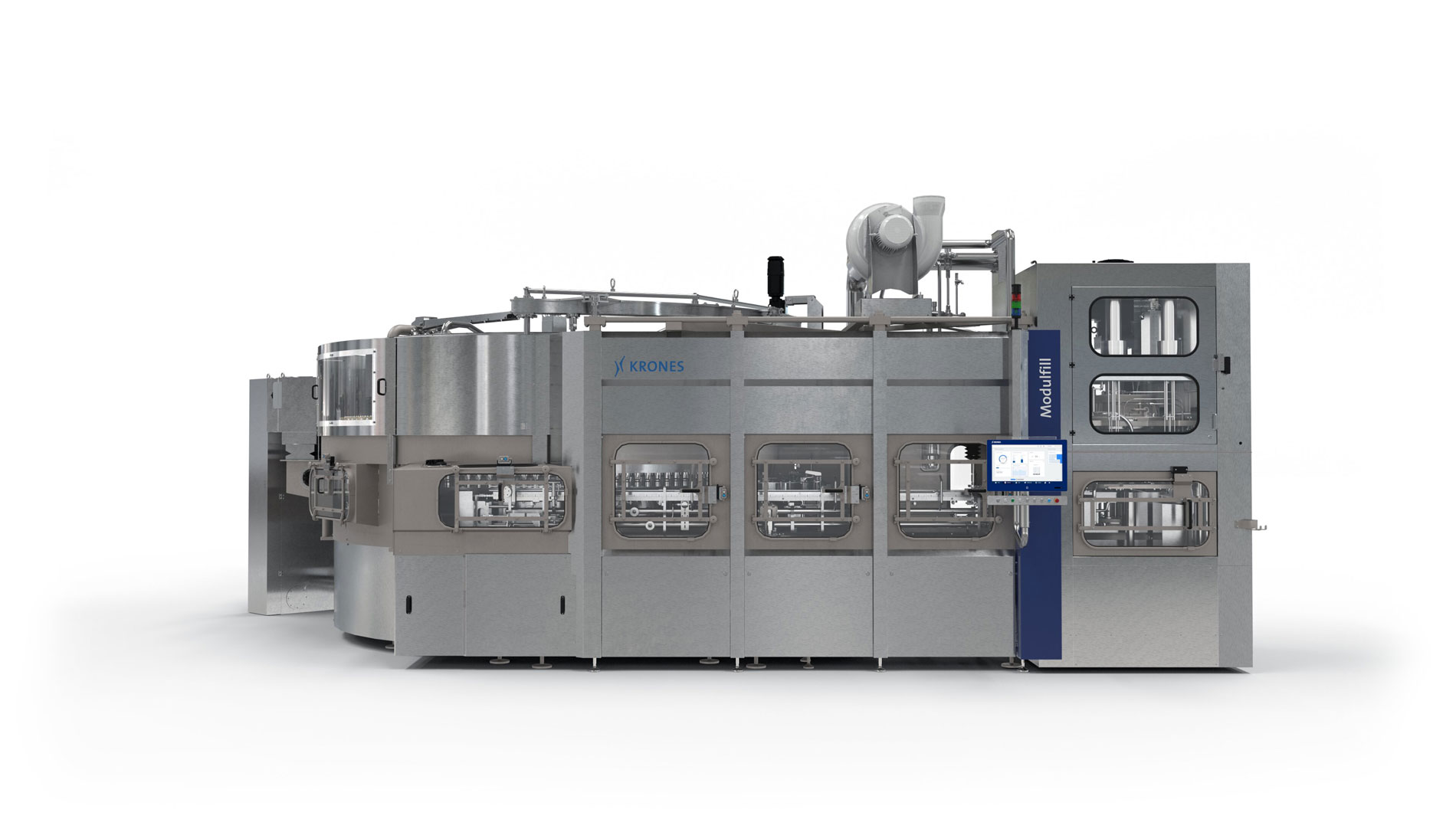27 March 2024
Krones AG, one of the world's leading manufacturers of machines and systems for the food and beverage industry, has been using Additive Manufacturing for several years to make its products more efficient. One example of this is the can turner, which in the past was made of stainless steel.

The way a can turner works sounds simple enough: beverage cans pass through this component during production and are rotated 180 degrees. However, the production of the contour of a conventional can turner is very complex and must be extremely precise in order to ensure an uninterrupted can flow during the production process. After all, Krones' lines process up to 100,000 PET bottles and around 130,000 cans per hour.
The company has been producing can turners on an HP Jet Fusion 5200 3D printer for several years. Before they could be used by customers, however, the right material had to be found. "It was important that the manufactured components be able to withstand certain loads during production. We also had to take into account the kinematic and tribological properties, and the material had to be resistant to cleaning agents as well,” explains Andreas Neuber, a development engineer who specializes in additive manufacturing at Krones. The solution? A high-performance base material in combination with a particularly robust wear profile.
“Advantages quickly became apparent”
“The advantages of the additively manufactured can turner quickly became apparent to us. By designing the model in CAD and printing it according to a mathematically calculated contour, the ideal can guide can be reproduced as often as required,” Neuber continues. In addition, overall procurement is significantly faster. “This is where 3D printing can demonstrate its advantages over traditional production,” explains Reinhard Ortner, head of additive production at Krones.


Meanwhile, these advantages are evident not only in production, but to the customer, as well. “The 3D-printed parts and components are significantly lighter. If you compare the additively manufactured can turner to a conventionally manufactured one, you’re talking about a weight reduction of around 80 percent,” says Andreas Neuber. “That means easier handling during conversion – for example, when changing from a 0.5-liter to a 0.3-liter can.”
Fast procurement reduces downtime
3D printing also plays a major role in the supply of spare parts. “If the system comes to a standstill, a part can be produced and made available to the customer much faster. This significantly reduces downtime, which of course also has an impact on OEE,” explains Reinhold Ortner.
Krones is now using its HP Jet Fusion 3D printer for a range of new parts, including additively manufactured gripper systems. “We’re thinking carefully about the areas of application in which the 3D printing process makes sense, with a particular focus on parts that are difficult to replace or very complex to manufacture,” Ortner reveals.
MORE INFORMATION
Tags
- Packaging industry
